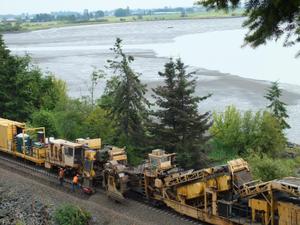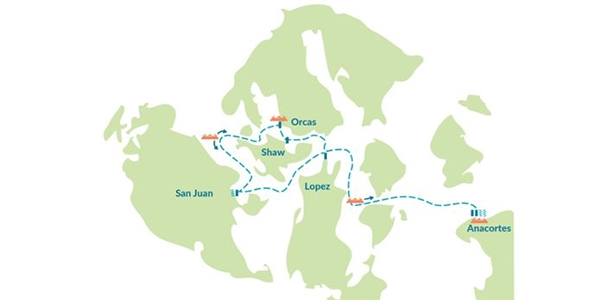— by Floyd McKay for Crosscut.com —
Developers of the largest of the region’s proposed coal-export terminals have shifted their site plan to claim a dramatic reduction in impacts on wetlands.
Simultaneously, SSA Marine, the Seattle international terminal operator, said it will speed up plans to operate Gateway Pacific Terminal (GPT) north of Bellingham at full capacity. The capacity planning, along with plentiful evidence that BNSF Railway is beefing up its tracks in northwestern Washington to prepare for more coal and oil traffic, alerted terminal foes and brought immediate pushback Monday from the Bellingham City Council.
Potentially adding fuel to the fire, BNSF and its largest union are moving toward a contract that allows the railroad to run the 130-car, mile-plus-long coal trains with a single engineer in the cab, replacing the present practice of two in the cab.
All of this is part of the unfolding drama of Big Energy’s efforts to move massive amounts of coal and crude oil from the energy basins of Wyoming, Montana and North Dakota to deepwater ports in the Pacific Northwest for export to Asia.
(To read the full article, go to crosscut.com/2014/07/23/coal-ports/121127/coal-port-bellingham-could-ramp-rapidly/ )
**If you are reading theOrcasonian for free, thank your fellow islanders. If you would like to support theOrcasonian CLICK HERE to set your modestly-priced, voluntary subscription. Otherwise, no worries; we’re happy to share with you.**








We all need to do everything we can to stop this from becoming a reality!! AND there’s been another derailment in Seattle!! Enough proof that this is a HUGELY dangerous project!